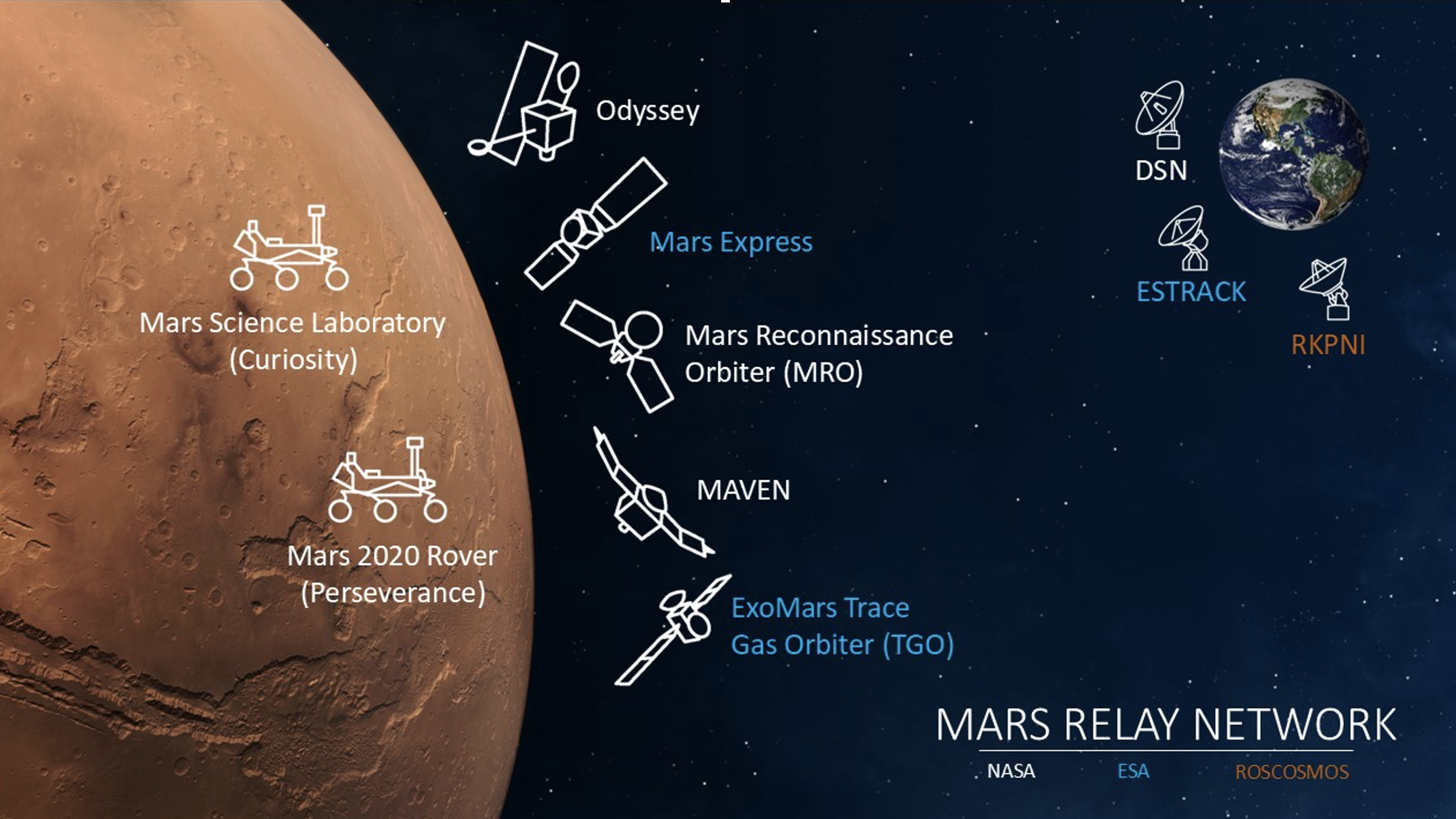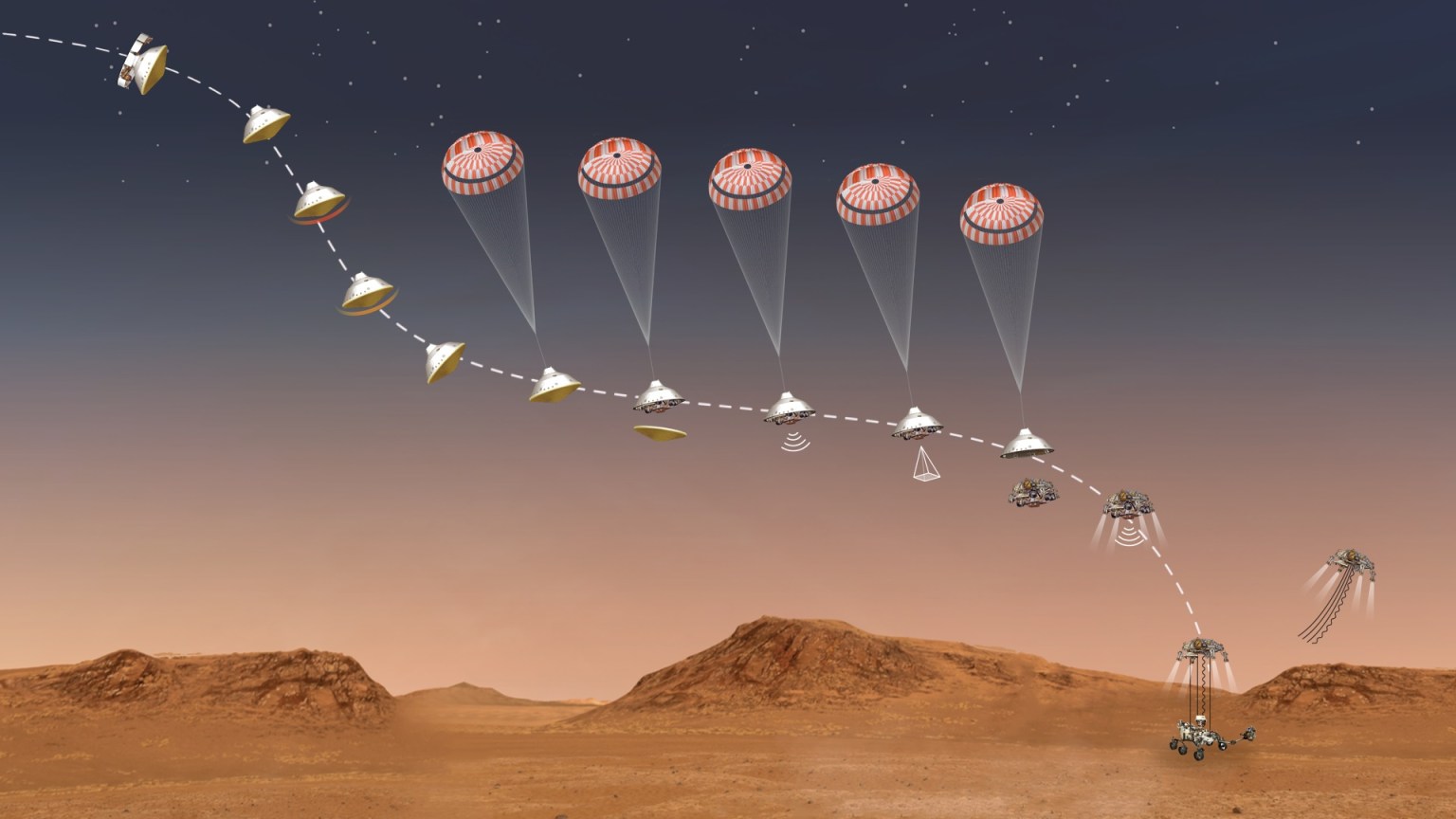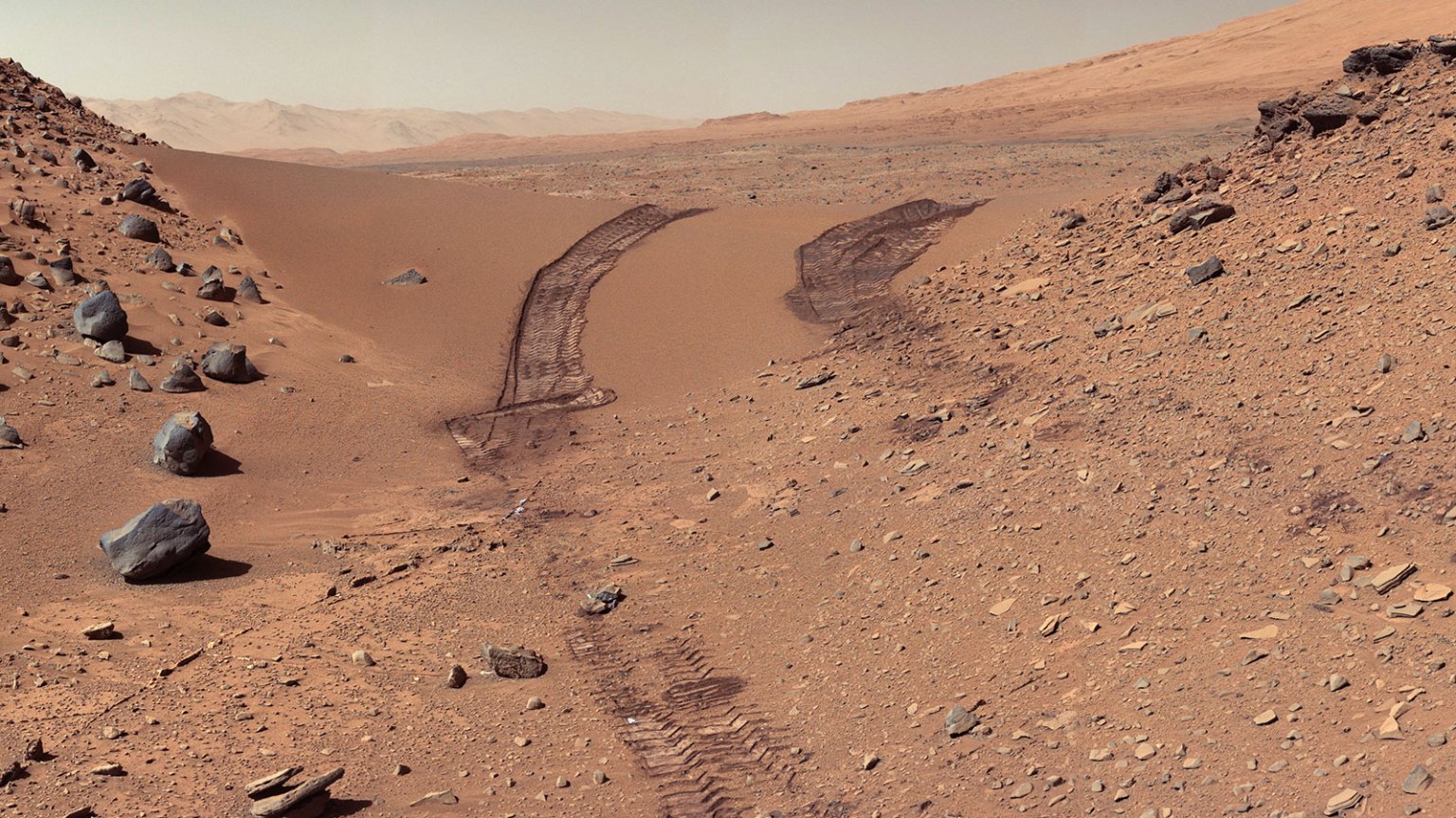Mars Relay Network
The Mars Relay Network (MRN) is an international constellation of five spacecraft orbiting the Red Planet that send precious science data from surface rovers back to Earth. Each orbiter relays rover data in addition to conducting its primary science mission.
Meet the MRN
The MRN is an international collaboration between NASA and the European Space Agency (ESA).
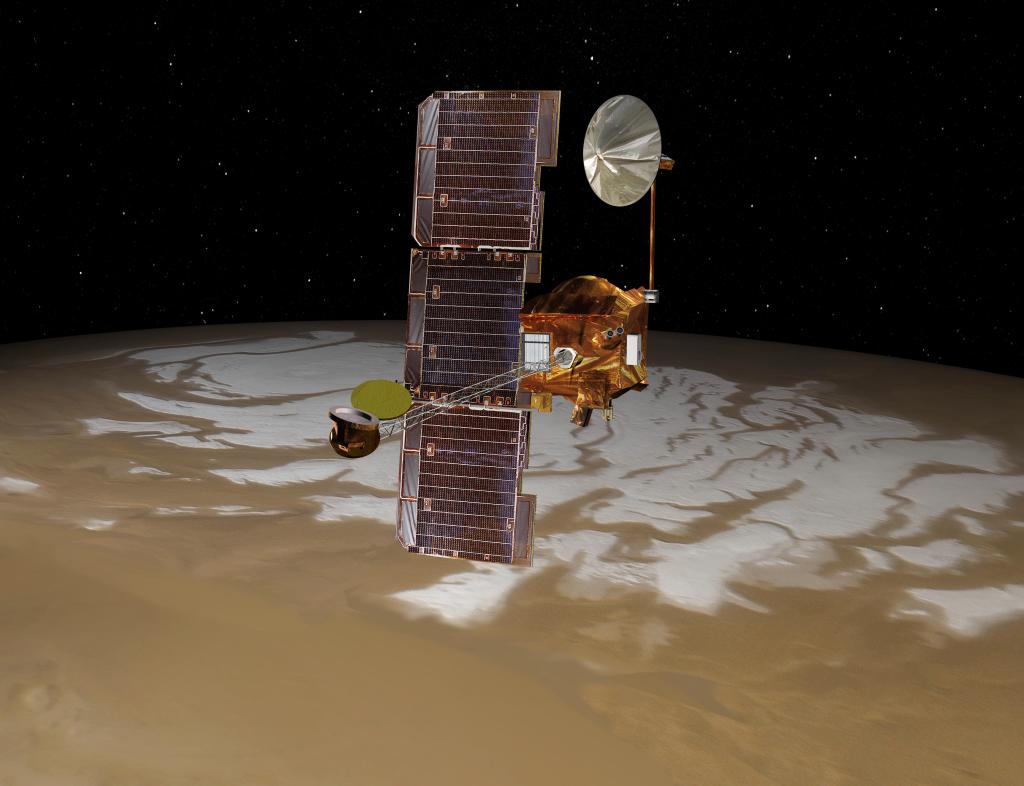
Mars Odyssey (ODY)
At Mars for 23 years, NASA’s Mars Odyssey orbiter was the first spacecraft to make a global map of the chemical elements and minerals that make up Mars.
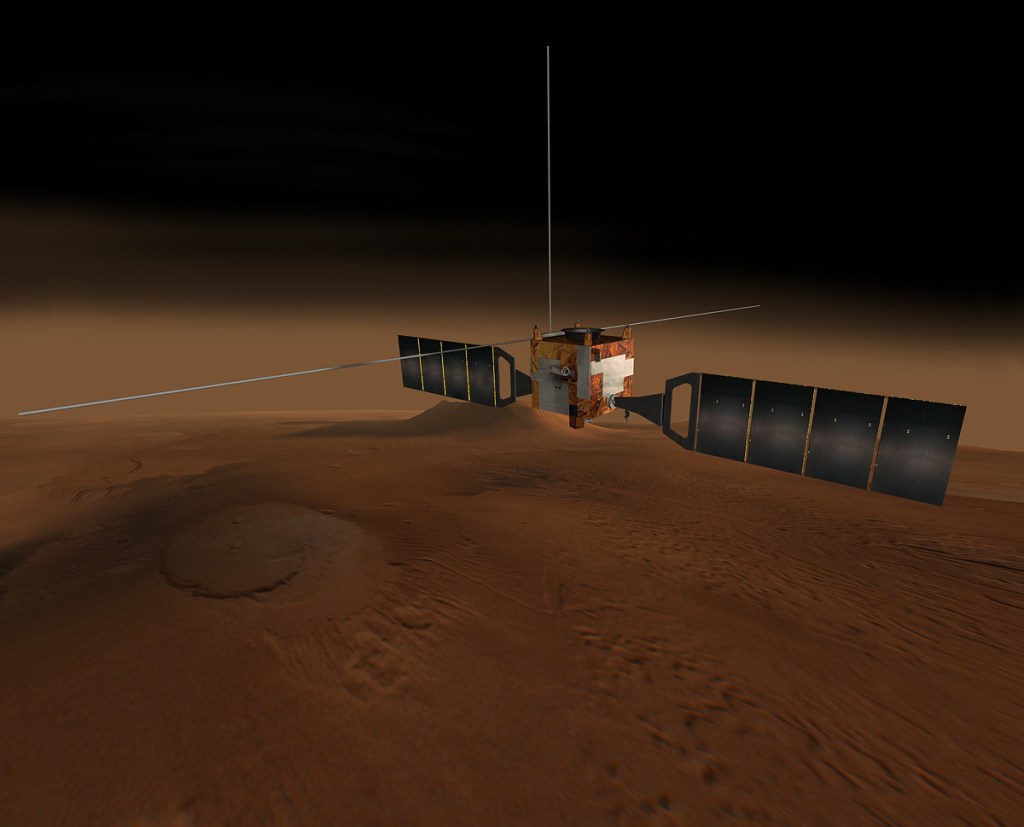
Mars Express (MEX)
ESA’s Mars Express orbiter offers backup MRN relay support while continuing its science mission.
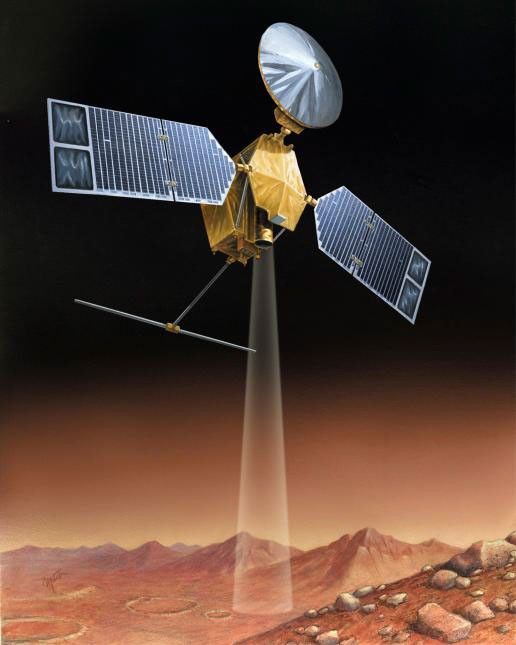
Mars Reconnaissance Orbiter (MRO)
NASA’s Mars Reconnaissance Orbiter can point its antenna to Earth at the same time as it’s communicating with the rovers, reducing the time it takes to relay rover data to and from Earth.
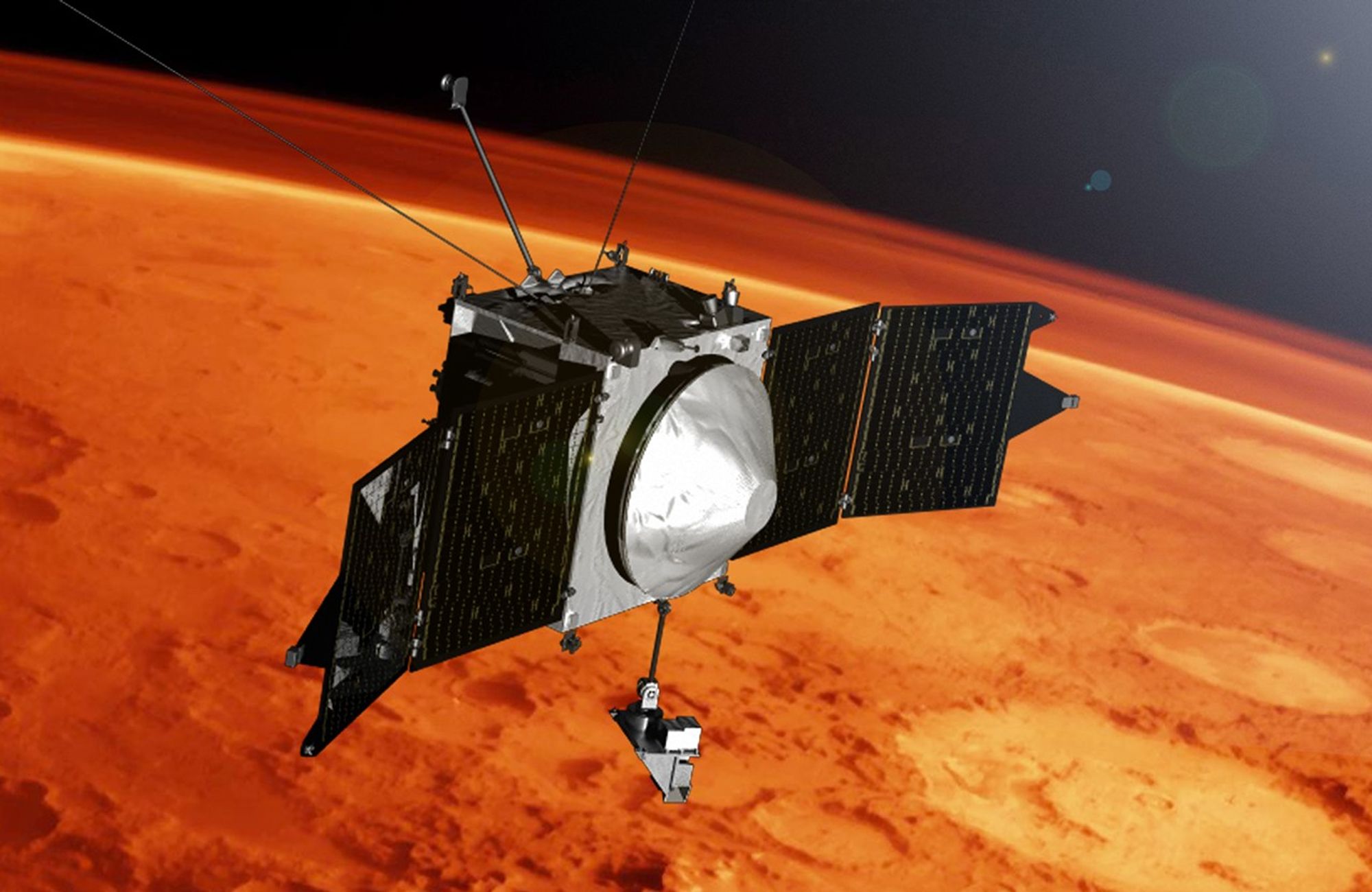
MAVEN (MVN)
NASA's Mars Atmosphere and Volatile EvolutioN (MAVEN) orbiter's wide orbit allows it to study the effects of the solar wind on the Martian atmosphere.
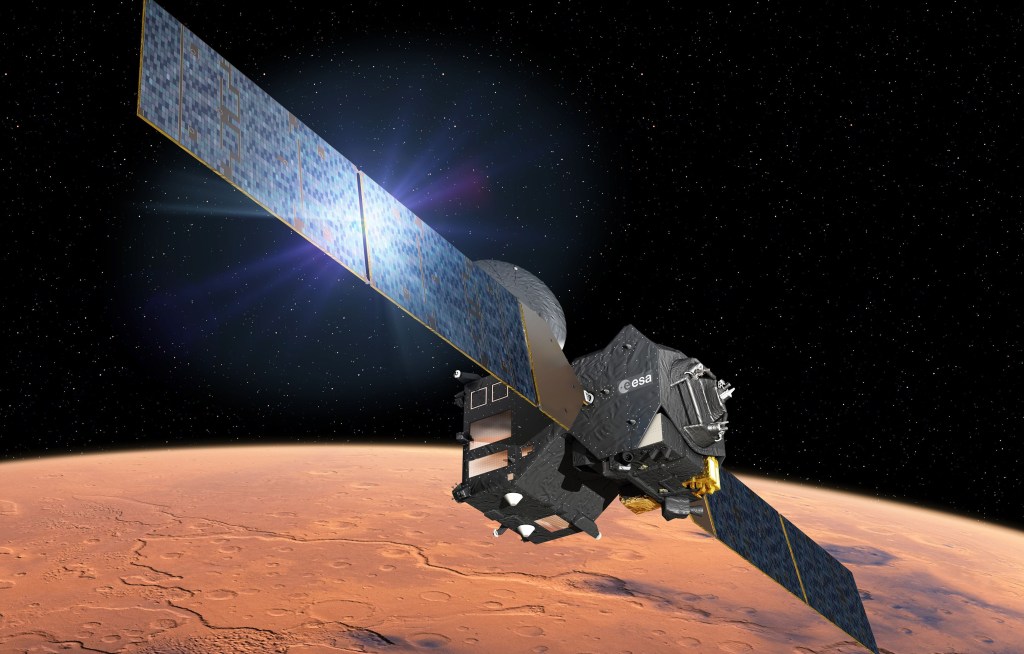
ExoMars Trace Gas Orbiter (TGO)
The newest spacecraft in the MRN fleet, ESA’s Trace Gas Orbiter, sends — on average — the most relay data per day from Mars to Earth.
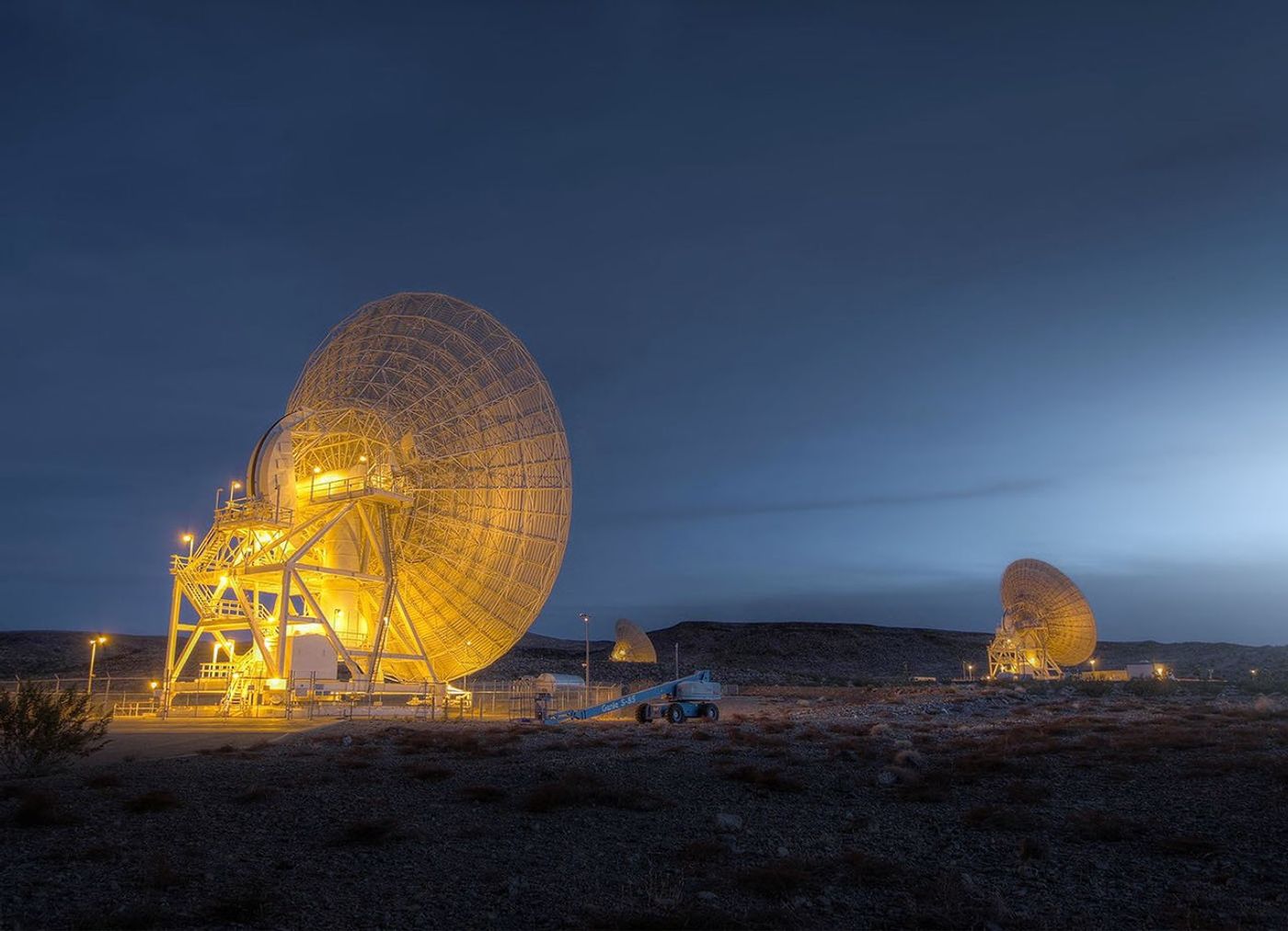
The Deep Space Network (DSN)
NASA’s Deep Space Network is one of three international antenna complexes that support downlinks from Mars.
How It Works
The MRN frees up rovers such as Perseverance and Curiosity for more scientific research on the surface of Mars.
While commands and telemetry can be sent directly to and from Earth from Mars, the amount of science data collected would take an extremely long time to transmit. Rovers — and landers, when one is active — instead send their science data to several orbiters studying Mars from above. The orbiters then transmit the data millions of miles through interplanetary space to radio antennas on Earth, including NASA’s Deep Space Network.
Did you know?
- The orbiters have larger radio systems, more power available from the Sun to power those systems, and more regular contact with Earth.
- Every image seen from the surface of Mars since 2004 has been transmitted through the Mars Relay Network.
- The rovers lack line-of-sight to the Earth for about 12 hours per day due to Mars’ planetary rotation.
- The distance between Earth and Mars varies between 33.9 million miles (54.6 million kilometers, or about 3 minutes light time) to 248.7 million miles (400.2 million kilometers), or about 22.4 minutes, depending on the planets’ position in their orbits.
- To communicate over that long distance, the rovers would need to carry large and power-hungry radio systems, or otherwise suffer from low data rates. Instead, they communicate with nearby orbiters at data rates up to 2 Mbps, two million bits of data per second.
How We Use It
MRN orbiters return rover data to scientists back on Earth about a dozen times a week — each gigabit (Gb) containing one billion bits of data from the surface of Mars.
Relaying to Earth
- Several of the orbiters can point their antennas to Earth at the same time they're communicating with the rovers, shortening the time it takes to relay the rover data to Earth. The other orbiters collect data first, then turn their antennas to Earth.
- Operating in zero gravity allows the orbiters to have larger antennas and solar panels that would be impractical on a rover.
- The number of relay sessions over each rover and the length of each pass varies from day to day, depending on the data collected by the rover and which orbiter is being used for relay.
- MRN spacecraft may send their data to one of three antenna complexes on Earth, maintained by ESA, NASA, and Roscosmos (the Russian space agency, which is only used by TGO).
- NASA operates the Deep Space Network (DSN), three groups of enormous radio antennas spaced about 120 degrees apart on Earth, in the U.S. (California), Spain, and Australia. Together, they can scan almost any part of the sky at any time. The trio of antenna complex networks have some of the largest radio telescopes in the world.
A Critical Role
The MRN is a crucial part of any landing on Mars. When the Perseverance rover landed at Jezero Crater in 2021, the Mars Reconnaissance Orbiter received its entry, descent, and landing data in real-time and immediately transmitted it to Earth. MAVEN recorded the entire radio spectrum around the rover’s transmit frequency —collecting so much data that it took several hours to transmit to Earth.
Relay Sessions and Data Volume
| Name (arrival at Mars) | Average miles (km) above Mars | Number of passes per day | Average data transmitted |
|---|---|---|---|
| NASA: Mars 2001 Odyssey (2001) | 239 – 280 miles (385 – 450 km) | 2-4 | 170.4 Mb/day |
| ESA: Mars Express (2003) | 185 – 6,280 miles (298 – 10,107 km) | 1-3 | N/A (backup orbiter) |
| NASA: Mars Reconnaissance Orbiter (2005) | 158 – 199 miles (255 – 320 km) | 2-4 | 447.5 Mb/day |
| NASA: MAVEN (2013) | 124 – 2796 miles (200 – 4,500 km) | 2-4 | 897.5 Mb/day |
| ESA: ExoMars Trace Gas Orbiter (2016) | 250 miles (400 km) | 2-4 | 1,562.7 Mb/day |
Key Terms
- Pass or Overflight: When an orbiter passes above a rover at a predicted time of the Martian day
- Relay Session: When a rover and an orbiter both turn on their radios and establish a connection
- Return Link: When the rover transmits its science data and information about the health of its systems
- Downlink: When antennas on Earth receive the data from the orbiter. Data from the downlinks, which often includes relay data, help spacecraft operators plan their activities in the coming days and weeks
Network Partners
The MRN is a collaboration between NASA and ESA. In the future, more spacecraft from other agencies and organizations may join the MRN to expand its data pipeline to Earth. The International Mars Relay Coordination Working Group is central to this ongoing collaboration. For more details, visit the Partners page.

























